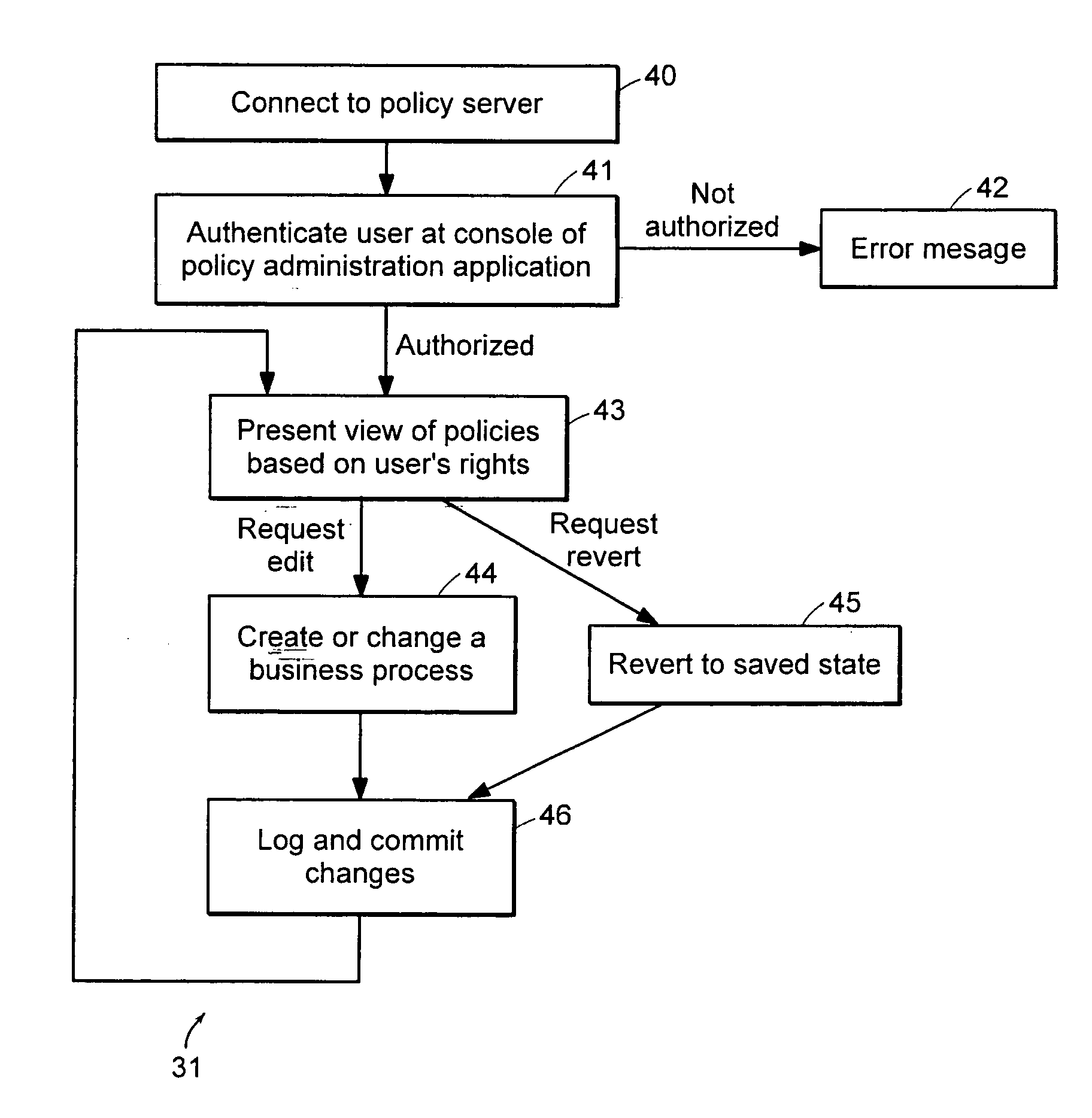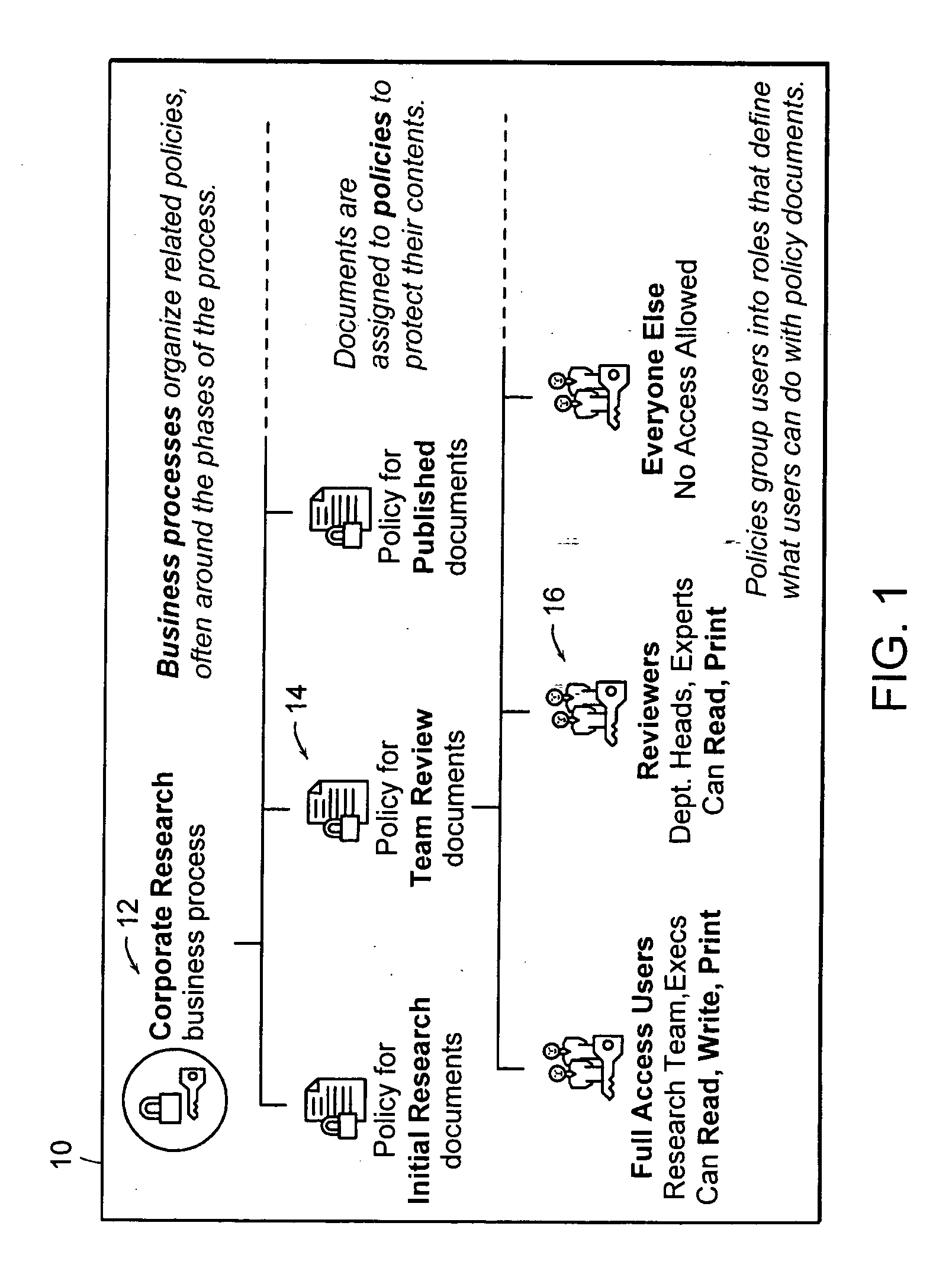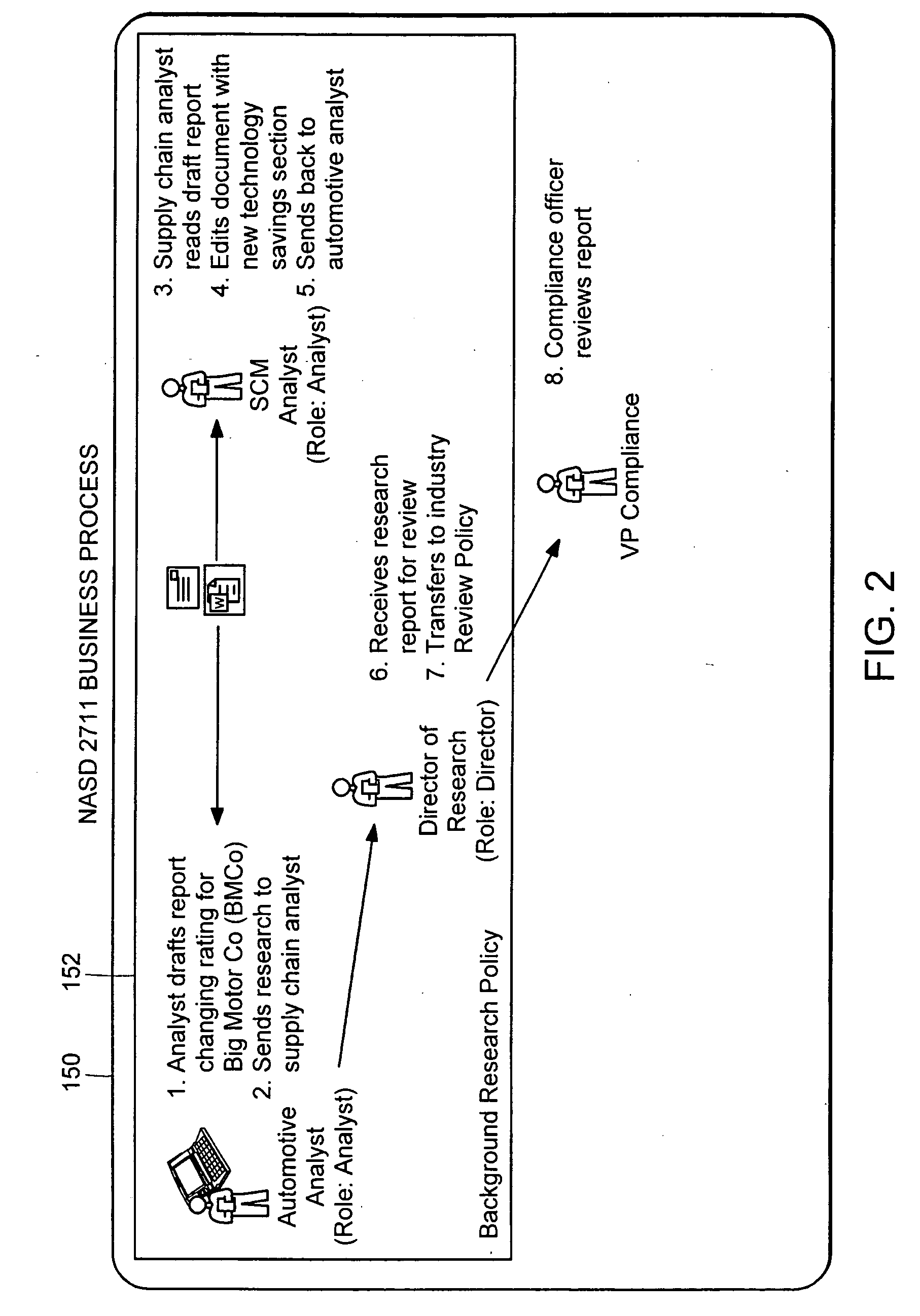Computer method and apparatus for managing data objects in a distributed context
a distributed context and computer technology, applied in the field of usage rights enforcement and management of digitally encoded documents and data, can solve the problems of difficult and ideal impossible for someone, copy-prevention technologies not powerful enough to describe usage policies, and the type of usage rights that can be enforced are too coarse grained to be a general solution, so as to achieve the effect of protecting integrity
- Summary
- Abstract
- Description
- Claims
- Application Information
AI Technical Summary
Benefits of technology
Problems solved by technology
Method used
Image
Examples
Embodiment Construction
[0095] A description of preferred embodiments of the invention follows.
[0096] The present invention starts with centralized management of usage rights organized in a structure that mirrors the important processes of the business. FIG. 1 illustrates the organizing structure 10 for policies employed in one embodiment of the present invention. A business process 12 represents progressively continuing procedures based on controlled phases or activities that are systematically directed at achieving specific business results. Business processes 12 within the hierarchical organizing structure 10 act as containers that hold one or more control policies 14. A control policy 14 specifies usage rules that govern how the protected data objects may be used and by whom. Policies typically represent the phases or activities within a business process and are flexible enough to support data classifications (e.g. company confidential, executive only, etc.). Each protected data object (illustrated as...
PUM
 Login to View More
Login to View More Abstract
Description
Claims
Application Information
 Login to View More
Login to View More - R&D
- Intellectual Property
- Life Sciences
- Materials
- Tech Scout
- Unparalleled Data Quality
- Higher Quality Content
- 60% Fewer Hallucinations
Browse by: Latest US Patents, China's latest patents, Technical Efficacy Thesaurus, Application Domain, Technology Topic, Popular Technical Reports.
© 2025 PatSnap. All rights reserved.Legal|Privacy policy|Modern Slavery Act Transparency Statement|Sitemap|About US| Contact US: help@patsnap.com



